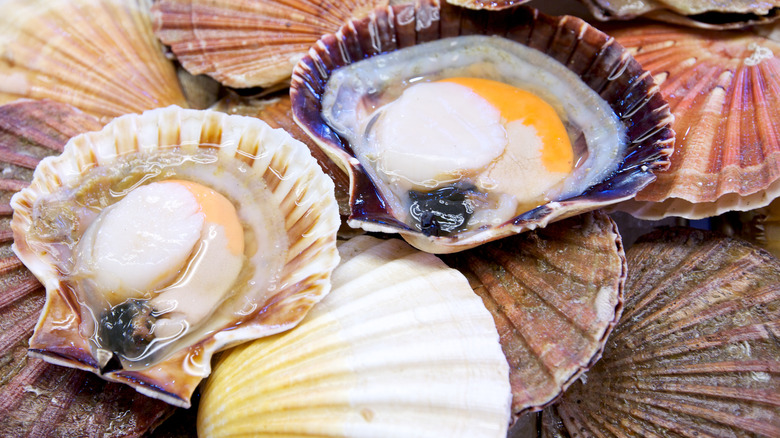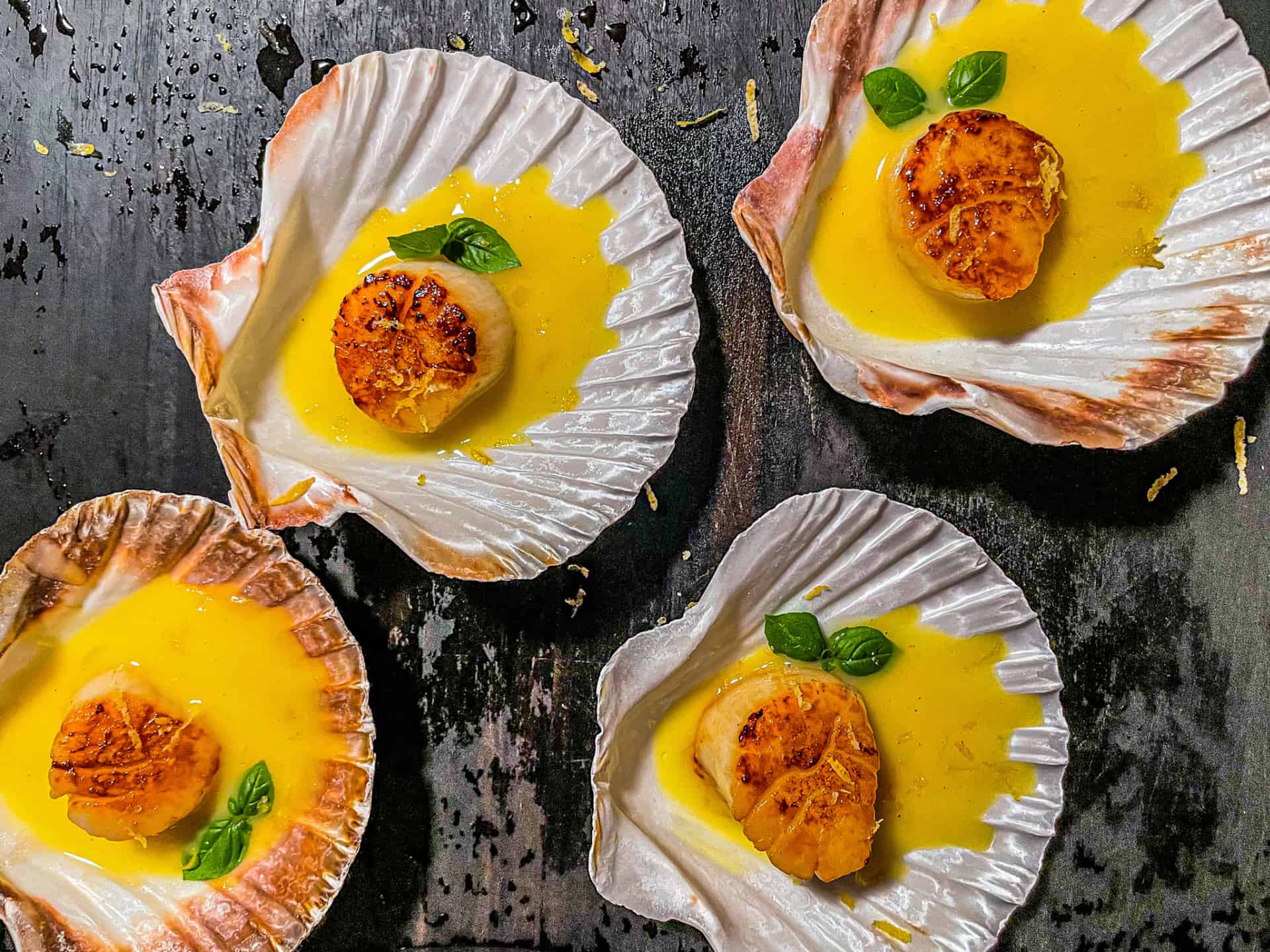
Scallops, those delectable morsels of the sea, have a magical way of elevating any dish from ordinary to extraordinary. But did you know that not all scallops are created equal? Just like stepping into a garden center filled with a vibrant array of flowers, the seafood market offers a delightful variety of scallops, each with its own unique charm and culinary uses. Today, we’re diving deep into the world of these bivalve beauties, exploring the key differences between the petite bay scallop and its larger, meatier cousin, the sea scallop.
A Quick Dive into the World of Scallops: What Exactly Are We Eating?
Before we unravel the mysteries of bay vs. sea scallops, let’s take a moment to appreciate the fascinating creatures behind these culinary treasures. Scallops belong to the mollusk family, sporting two hinged shells and a remarkable adductor muscle that allows them to gracefully propel themselves through the water. The part we savor with such delight is this very muscle, prized for its delicate texture and sweet, slightly briny flavor.
Bay Scallops vs. Sea Scallops: A Side-by-Side Comparison
While both bay and sea scallops share the same family tree, their distinct environments and growth patterns result in noticeable differences in size, texture, flavor, and even price. Let’s break down these distinctions:
| Feature | Bay Scallops | Sea Scallops |
|---|---|---|
| Size | Petite, averaging about ½ inch in diameter | Larger, ranging from 1 ½ to 2 inches in diameter |
| Texture | Exquisitely tender, practically melting in your mouth | Firmer, offering a satisfying chew |
| Flavor | Delicate, sweet, with a subtle briny note | More pronounced, slightly sweet, and briny |
| Price | Generally less expensive due to their smaller size and abundance | Pricier due to their larger size and higher demand |
| Cooking Time | Requires minimal cooking to preserve tenderness | Can handle slightly longer cooking times while retaining a moist interior |

Beyond the Basics: Other Scallop Varieties to Explore
While bay and sea scallops reign supreme in the culinary world, don’t overlook these lesser-known but equally delicious varieties:
- Calico Scallops: Hailing from warmer waters, these tiny scallops, often mistaken for bay scallops, boast a beautiful patchwork of red and pink on their shells. Their delicate flavor and affordable price make them a fantastic choice for soups and stews.
- Patagonian Scallops: Sourced from the pristine waters off the coast of Argentina, these small, sweet scallops offer a delightful tenderness reminiscent of bay scallops. Try them in chowders, pasta dishes, or simply seared to perfection.

Shopping for Scallops: Tips for Selecting the Freshest Catch
Navigating the seafood aisle can feel like embarking on a treasure hunt, but armed with a few key tips, you’ll be selecting the freshest scallops like a seasoned pro in no time!
- Fresh vs. Frozen: While the word “fresh” might sound tempting, opting for frozen scallops is often the best way to guarantee peak freshness. Unless you live near the coast, those “fresh” scallops have likely been previously frozen and thawed, potentially compromising their texture and flavor. Frozen scallops, on the other hand, are flash-frozen at their peak, locking in their natural sweetness and moisture.
- Wet-Packed vs. Dry-Packed: Always be on the lookout for dry-packed scallops. Wet-packed scallops have been soaked in a phosphate solution, which, while increasing their shelf life, can result in a watery, less flavorful scallop. Dry-packed scallops, as the name suggests, have not undergone this treatment, ensuring a purer flavor and better sear.
- Diver and Dayboat Scallops: For the ultimate in freshness and sustainability, consider splurging on diver or dayboat scallops. Diver scallops are hand-harvested, minimizing damage to the ocean floor, while dayboat scallops are rushed to market within 24 hours of being caught. While these options come with a higher price tag, their exceptional quality is worth every penny.

Unlocking the Culinary Potential of Bay and Sea Scallops
Now that we’ve demystified the differences between bay and sea scallops, let’s explore how to best showcase their unique qualities in the kitchen:
Bay Scallops: Celebrating Delicacy and Sweetness
- Seared to Perfection: Their small size makes bay scallops ideal for quick searing. A hot pan, a touch of oil, and a minute or two per side are all it takes to achieve a beautiful golden crust and a tender, melt-in-your-mouth interior.
- Pasta Night Stars: Toss delicate bay scallops into pasta dishes at the very end of cooking to preserve their tender texture. Their subtle sweetness pairs beautifully with light, flavorful sauces.
- Chowder Champions: Bay scallops shine in creamy chowders, adding a touch of sweetness and a delightful textural contrast.
Sea Scallops: Embracing Rich Flavor and Hearty Texture
- Seared and Sizzling: While sea scallops can handle a bit more cooking time than their bay counterparts, aim for a quick sear over high heat to achieve a caramelized crust and a juicy, flavorful center.
- Skewer Sensations: Their firm texture makes sea scallops perfect candidates for grilling or broiling on skewers. Marinate them in your favorite flavors for an extra burst of deliciousness.
- Elegant Entrees: Sea scallops lend themselves beautifully to elegant entrees. Serve them atop creamy risottos, alongside roasted vegetables, or as the star of a sophisticated seafood platter.
Resources for Expanding Your Scallop Horizons
Ready to embark on your own scallop adventure? Here are some fantastic resources to inspire your culinary creativity:
- Serious Eats: The Food Lab’s Guide to Pan-Seared Scallops: https://www.seriouseats.com/the-food-lab-how-to-sear-scallops
- Bon Appétit: 27 Scallop Recipes That Go Way Beyond Seared https://www.bonappetit.com/recipes/slideshow/scallop-recipes
- Seafood Watch: Sustainable Seafood Recommendations: https://www.seafoodwatch.org/
No matter which type of scallop you choose, remember to source them responsibly and savor every bite of these oceanic treasures!






